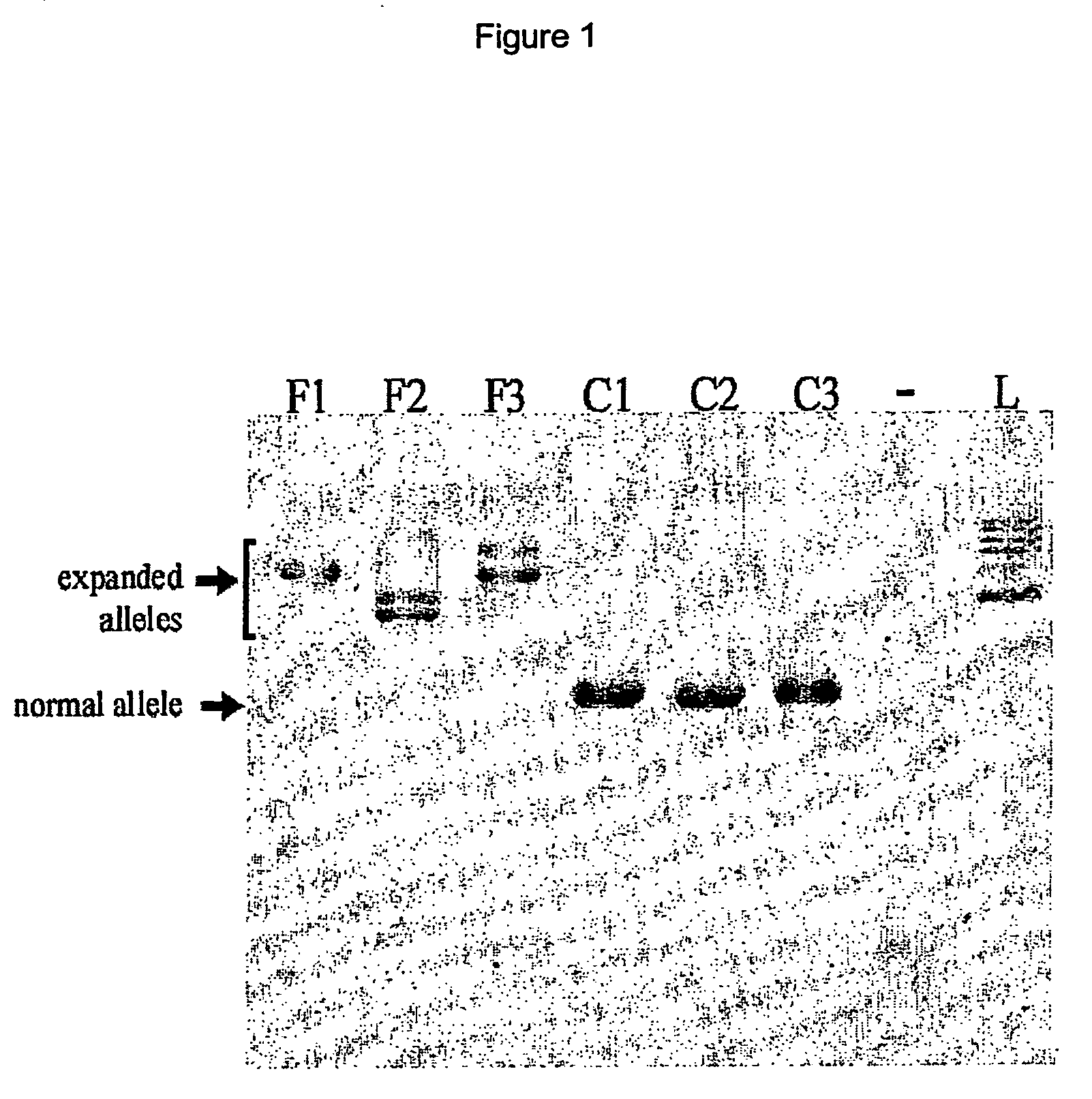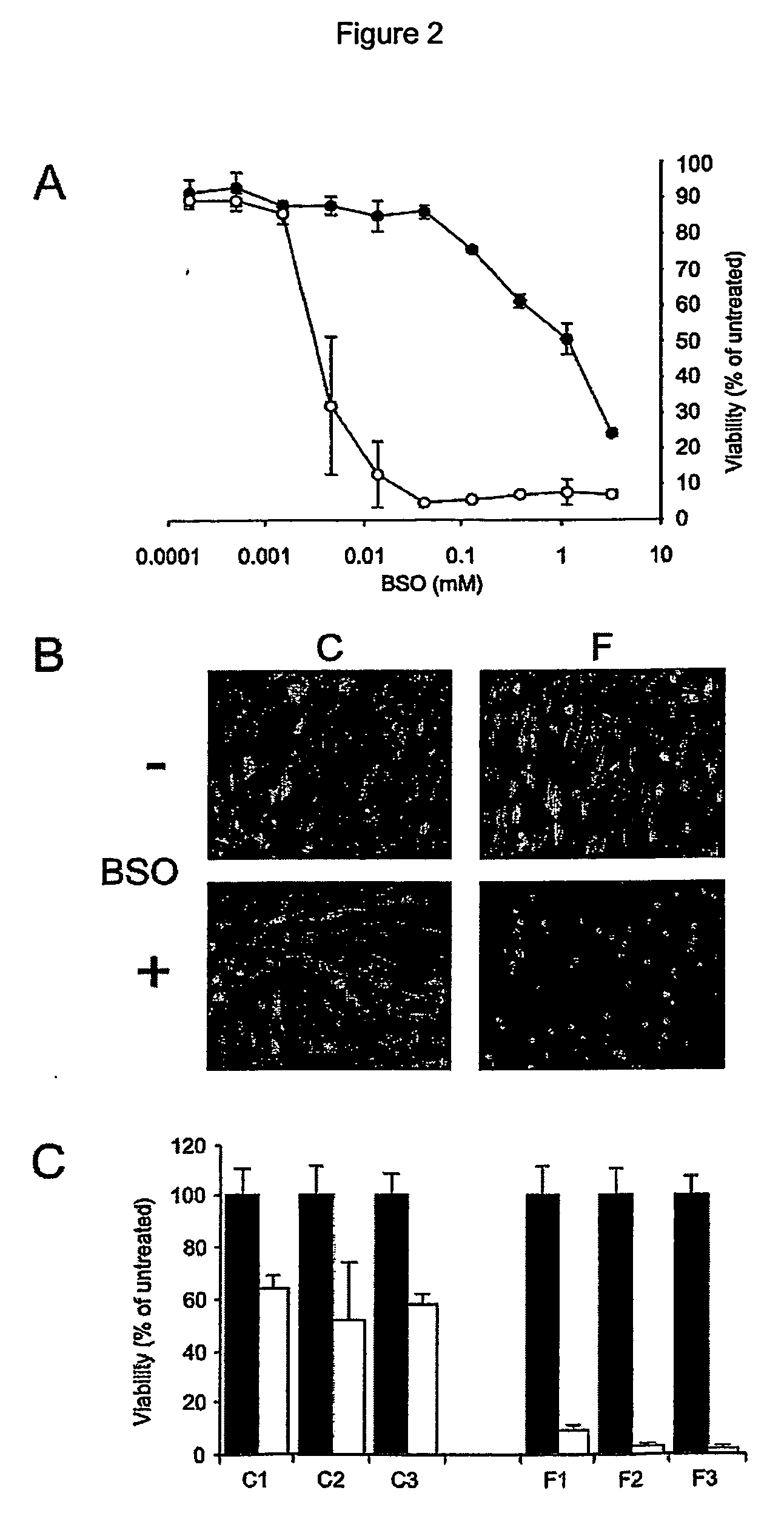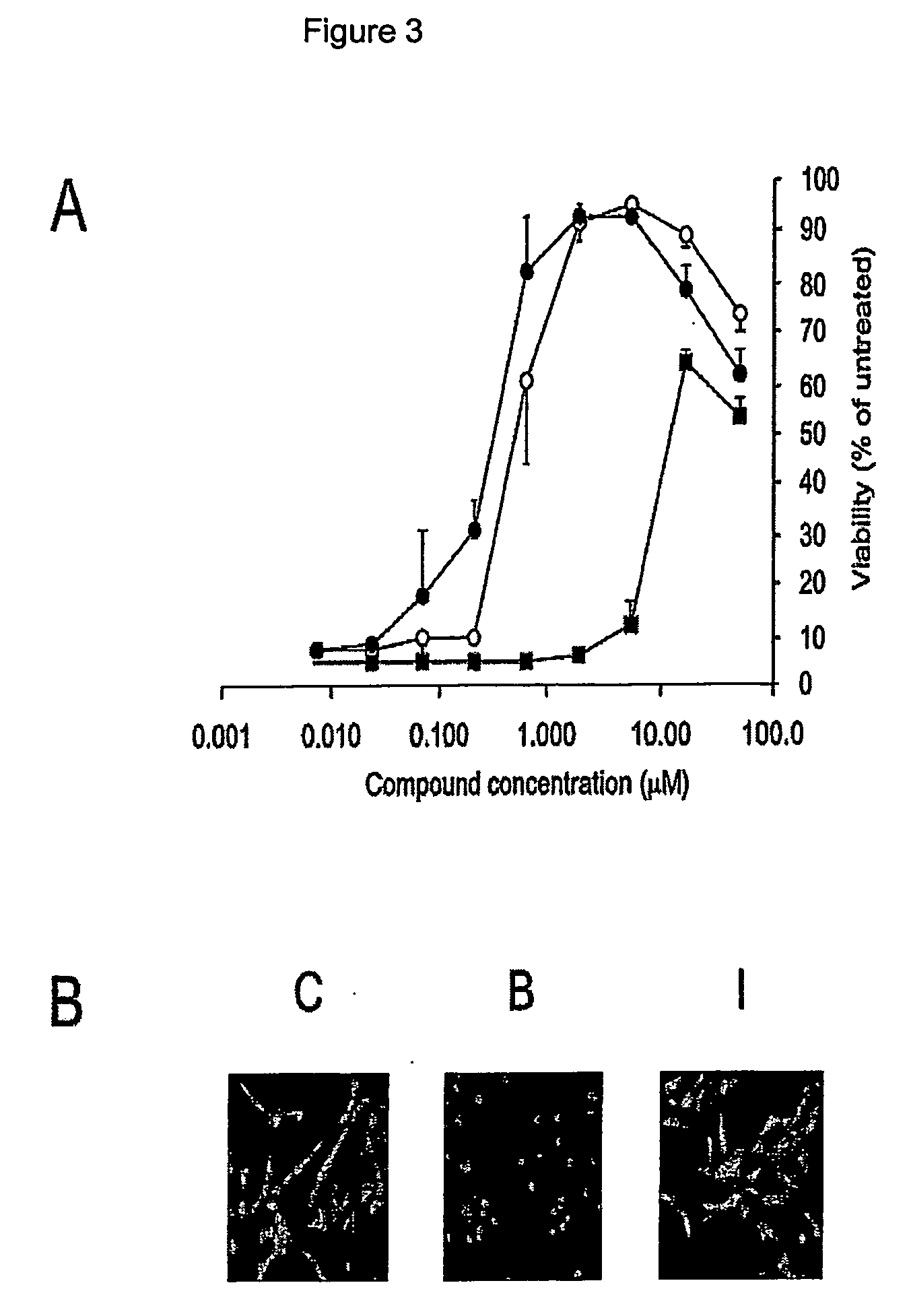Screening method and compounds for treating friedreich ataxia
a screening method and compound technology, applied in the field of screening methods and compounds for treating friedreich ataxia, can solve the problems of no treatment available, increased oxidative stress, cell damage,
- Summary
- Abstract
- Description
- Claims
- Application Information
AI Technical Summary
Benefits of technology
Problems solved by technology
Method used
Image
Examples
example 1
Description of Cell Lines and Culture Conditions
[0085] Friedreich Ataxia primary culture fibroblast cell lines F1 and control fibroblast line C1 were provided by the Insel-Spital Bern (Switzerland), FRDA line F3 was provided by Hopital Necker, Paris (France), FRDA lines F2 and control lines C2 and C3 were obtained from Coriell Cell Repositories (Camden, N.J.; catalog numbers GM04078, GM08402 and GM08399 respectively). Cells were grown in a humidified atmosphere supplemented with 5% CO2. For experiments, the cells were trypsinized and resuspended at a density of 40000 cells / ml in growth medium consisting of 25% (v / v) M199 EBS and 64% (v / v) MEM EBS without phenol red (Bioconcept, Allschwil, Switzerland) supplemented with 10% (v / v) fetal calf serum (PAA Laboratories, Linz, Austria), 100 U / ml penicillin, 100 μg / ml streptomycin (PAA Laboratories, Linz, Austria), 10 μg / ml insulin (Sigma, Buchs, Switzerland), 10 ng / ml EGF (Sigma, Buchs, Switzerland) and 10 ng / ml bFGF (PreproTech, Rocky Hi...
example 2
Differential Effect of BSO Treatment on Friedreich Ataxia and Control Fibroblasts
[0087] This example shows the high sensitivity of FRDA fibroblasts towards oxidative stress generated by culture in the presence of BSO. This effect is specific for all FRDA cells tested. All FRDA cells die in the presence of BSO whereas control cell survive this treatment.
[0088] The cells were seeded in 96-well plates at a density of 4000 cells / well. They were incubated in the presence of various concentrations of L-buthionine-(S,R)-sulfoximine (BSO), an inhibitor of γ-glutamyl cysteine synthase (EC: 6.3.2.2), the rate limiting enzyme in the biosynthesis of glutathione. Cell viability was measured when the first signs of toxicity appeared in the controls (typically after 12 to 48 h). The cells were stained for 60 min at room temperature in PBS with 1.2 μM CalceinAM and 4 μM Ethidium homodimer (Live / Dead assay, Molecular Probes, Eugene, Oreg.). The plates were washed twice with PBS and fluorescence in...
example 3
Idebenone Can Rescue FRDA Cells from Cell Death Induced by BSO Treatment
[0091] FRDA cells were preincubated for 24 hours with Idebenone, Vitamin E or Trolox and were then subjected to 1 mM BSO treatment. Cell viability was measured as described in Example 2.
[0092] By applying various concentrations of Idebenone (2,3-dimethoxy-5-methyl-6(10-hydroxydecyl)-1,4-benzoquinone) to the cells prior to the BSO treatment, it was observed that this molecule could prevent cell death, with an EC50 value of 0.5 μM (FIG. 3 panel A). Full rescue was observed at 2 μM and at the highest concentration tested (50 μM), the rescue effect was slightly diminished, probably because of the pro-oxidant properties of Idebenone at these concentrations (Semsei, I., et al., In vitro studies on the OH. and O2.-free radical scavenger properties of idebenone in chemical systems, Arch. Gerontol. Geriatr, 11, 187-197, (1990)) ). Upon microscopic examination, the Idebenone-treated cells appeared undistinguishable from...
PUM
| Property | Measurement | Unit |
|---|---|---|
| emission wavelengths | aaaaa | aaaaa |
| emission wavelengths | aaaaa | aaaaa |
| excitation and emission wavelengths | aaaaa | aaaaa |
Abstract
Description
Claims
Application Information
 Login to View More
Login to View More - R&D
- Intellectual Property
- Life Sciences
- Materials
- Tech Scout
- Unparalleled Data Quality
- Higher Quality Content
- 60% Fewer Hallucinations
Browse by: Latest US Patents, China's latest patents, Technical Efficacy Thesaurus, Application Domain, Technology Topic, Popular Technical Reports.
© 2025 PatSnap. All rights reserved.Legal|Privacy policy|Modern Slavery Act Transparency Statement|Sitemap|About US| Contact US: help@patsnap.com



